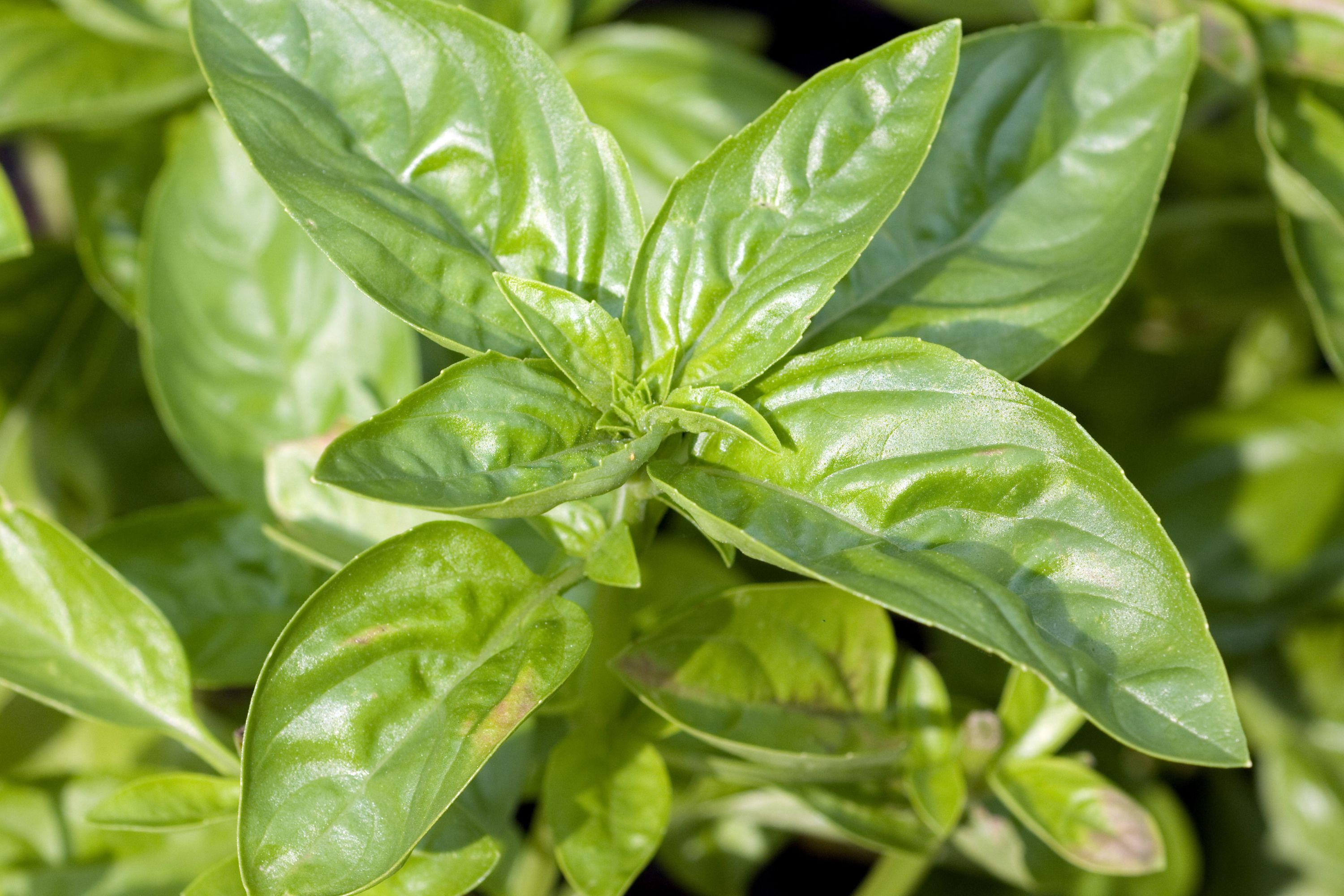Basil
(Ocimum basilicum)

Description
Ocimum basilicum, commonly known as basil, is an herbaceous plant in the Lamiaceae family. It is a popular culinary herb that is used in a variety of cuisines worldwide, including Italian, Thai, and Indian. Basil is also well-known for its medicinal properties and is used in traditional medicine to treat a range of ailments. Description and Taxonomy Basil is an annual herb that grows up to 60 cm tall. It has green, oval-shaped leaves with serrated edges that grow in pairs opposite each other along the stem. The leaves are highly fragrant and have a distinct aroma that is often described as sweet and spicy. The plant produces small white or pink flowers in late summer. There are several varieties of basil, each with its unique characteristics. The most commonly cultivated variety is sweet basil (Ocimum basilicum var. Genovese), which is used in Italian cuisine. Other popular varieties include Thai basil (Ocimum basilicum var. thyrsiflora), which has a spicy flavor and is used in Thai cuisine, and holy basil (Ocimum tenuiflorum), which is used in traditional Indian medicine. Basil is native to tropical regions of central Africa and Southeast Asia. It has been cultivated for thousands of years and has spread throughout the world, becoming an important herb in many cultures. Growing and Harvesting Basil is relatively easy to grow and can be cultivated in most climates. It prefers well-drained soil and full sun, although it can tolerate partial shade. Basil is typically propagated from seed, and the seeds should be sown in the spring when the soil has warmed up. Basil should be harvested regularly to encourage bushy growth and prevent the plant from bolting (producing flowers). The leaves can be harvested as soon as the plant has reached 6-8 inches tall. To harvest, simply snip off the top few inches of the stem, making sure to leave a few sets of leaves on the plant. This will allow the plant to continue growing and producing more leaves. Culinary Uses Basil is a versatile herb that is used in a variety of dishes. Its sweet and spicy flavor pairs well with tomatoes, garlic, and other herbs like oregano and thyme. Basil is commonly used in Italian cuisine, where it is used in dishes like pasta sauces, pesto, and pizza. Basil is also a popular ingredient in Thai cuisine, where it is used in curries, stir-fries, and soups. Thai basil has a stronger flavor than sweet basil and is often used in dishes that require a more robust herb. In addition to its culinary uses, basil is also used to make herbal teas and infused oils. Basil tea is said to have a calming effect and can be enjoyed hot or cold. Medicinal Properties Basil has been used for centuries in traditional medicine to treat a range of ailments. It is believed to have antibacterial, anti-inflammatory, and antioxidant properties. One of the most well-known medicinal properties of basil is its ability to aid in digestion. Basil is said to help reduce bloating, gas, and other digestive issues. It is also believed to have a calming effect on the stomach and can help relieve nausea. Basil is also used to treat respiratory issues like coughs and colds. It is believed to have anti-inflammatory properties that can help reduce inflammation in the respiratory tract, making it easier to breathe. Other traditional uses of basil include treating skin conditions, relieving stress and anxiety, and promoting overall health and wellness. Conclusion Ocimum basilicum, or basil, is a popular culinary herb that is enjoyed all over the world. Its sweet and spicy flavor makes it a versatile ingredient in many dishes
Taxonomic tree:







